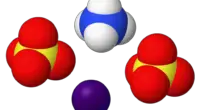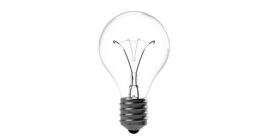Amps (Amperes) measure electric current flow, while watts measure power. Amps determine how much current flows, while watts indicate the rate at which energy is consumed or produced.
TL;DR Amps Vs. Watts
Amps (Amperes) measure the flow rate of electric current in a circuit, representing the rate at which electricity is flowing. Watts measure electrical power, indicating the rate at which electrical energy is being transferred or consumed. Amps determine the amount of current a device requires, while watts determine the amount of power it consumes. To convert amps to watts, multiply the amps by the voltage, and to convert watts to amps, divide the watts by the voltage. Both amps and watts are important in understanding the electrical characteristics and requirements of devices and circuits.
What are Amps?

Amps, short for amperes, is a unit of measurement used to quantify the amount of electric current flowing through a circuit. In simpler terms, it tells us how many electrons are moving past a given point in one second. Think of it as the rate at which electricity is flowing.
To put it into perspective, imagine water flowing through a pipe. The amps would be equivalent to the volume of water passing through that pipe per second. The higher the amps, the more electricity is being drawn from or supplied to a device.
Amps play an essential role in determining how much power an electrical device requires to function properly. For example, small electronic gadgets like smartphones and tablets typically operate on low amperage since they consume less power compared to larger appliances like refrigerators or air conditioners.
Amps measure the flow rate of electric current in a circuit – just like gallons per minute measures water flow rate in plumbing systems!
What are Watts?
Watts are a unit of power commonly used to measure electrical energy.
Watts represent the rate at which electrical energy is being transferred or consumed. They indicate how much work can be done in a given amount of time. For example, if an appliance has a rating of 100 watts, it means that it consumes 100 joules (a unit of energy) per second.
Watts are particularly important when considering the efficiency and capacity of electrical devices. By knowing their wattage, you can determine how much power they require and whether your electrical system can handle their demand.
Understanding wattage is also essential for calculating operating costs. The higher the wattage of an appliance or device, the more electricity it will use over time – leading to higher utility bills.
It’s worth noting that some appliances may have different wattage ratings depending on their mode or setting. For instance, a hairdryer may consume 1500 watts on high heat but only 750 watts on low heat.
Amps Vs. Watts – Key differences
| Amps (Amperes) | Watts | |
|---|---|---|
| Definition | Unit of electric current flow | Unit of power |
| Symbol | A | W |
| Measures | Flow of electric current | Rate of energy transfer or consumption |
| Calculation | Voltage divided by resistance | Voltage multiplied by current |
| Used for | Describing the amount of current flowing | Describing the amount of power consumed |
| Relationship | Current (Amps) = Power (Watts) / Voltage (Volts) | Power (Watts) = Current (Amps) x Voltage (Volts) |
| Represents | Quantity of electrons flowing through a circuit | Amount of work done or energy consumed |
| Examples | Current flowing through wires or circuits | Power consumed by electrical appliances |
| Importance in AC | Determines the flow of alternating current | Determines the power consumption |
| Importance in DC | Determines the flow of direct current | Determines the power consumption |
| Electrical Safety | Higher amperage can pose greater risks of electric shock | Higher wattage can generate more heat and potentially cause equipment damage or fire |
| Equipment Ratings | Appliances and devices may have amp ratings | Appliances and devices may have watt ratings |
How to Convert Amps to Watts
To convert amps (Amperes) to watts, you need to know the voltage (V) of the circuit or device. Use the following formula:
Watts = Amps x Volts
Here’s a step-by-step guide to converting amps to watts:
Identify the amperage (A) value. This is the amount of current flowing in the circuit or the rating of the device. Let’s say you have a device with a current rating of 5 amps.
Determine the voltage (V) of the circuit or device. This information can usually be found on the device itself or in the circuit specifications. For example, let’s assume the voltage is 120 volts.
Multiply the amperage (A) by the voltage (V) using the formula mentioned above:
Watts = 5 A x 120 V
Perform the calculation:
Watts = 600
So, in this example, 5 amps at 120 volts is equal to 600 watts.
Remember that this conversion applies to direct current (DC) circuits. In alternating current (AC) circuits, the relationship between amps and watts can be more complex due to factors like power factor and phase angle.
How to Convert Watts to Amps
To convert watts to amps, you need to know the voltage (V) of the circuit or device. Use the following formula:
Amps = Watts / Volts
Here’s a step-by-step guide to converting watts to amps:
- Determine the power consumption in watts (W) of the device or circuit. For example, let’s say you have a device with a power consumption of 800 watts.
- Identify the voltage (V) of the circuit or device. This information can usually be found on the device itself or in the circuit specifications. Let’s assume the voltage is 120 volts.
- Divide the power consumption (Watts) by the voltage (Volts) using the formula mentioned above:
Amps = 800 W / 120 V
- Perform the calculation:
Amps = 6.67
So, in this example, 800 watts at 120 volts is equal to approximately 6.67 amps.
Please note that this conversion applies to direct current (DC) circuits. In alternating current (AC) circuits, the relationship between watts and amps can be more complex due to factors like power factor and phase angle.
Image Credits
Featured Image By – rawpixel.com on Freepik








